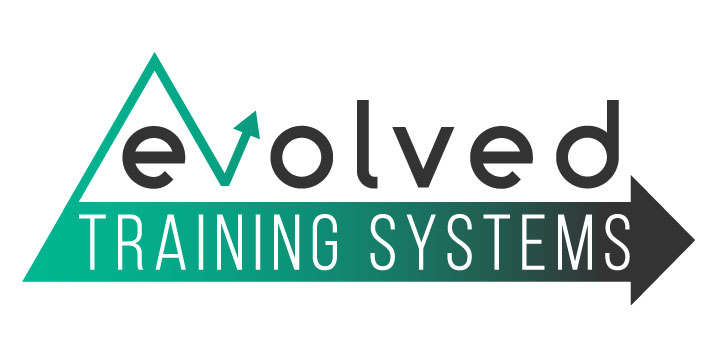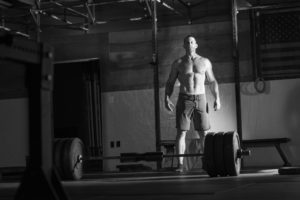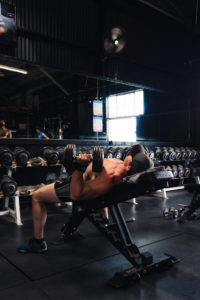The Mindset of Progress and Improvement
You Don’t Always Have to Lift More Weight
When I write programs, I am a huge fan of Linear Progression. It’s probably the simplest form of progression to implement, which makes it extremely effective for the masses to comprehend.
Linear Progression (LP) means to simply try to add a little bit of weight and/or reps to a movement week to week. LP is most often implemented with a “rep range.” The program may call for rep range of 4-6 or 6-8, or 8-12 etc. In general, when you can achieve all sets of a movement at the top of the rep range, you would increase weight the following week. Once weight is added, you would begin back at the beginning of the rep range, and work your way back up.
There are common mistakes that athletes make when using this approach. Here are a few examples and how to get the most out of your training by overcome mental hurdles.
Starting the cycle with weights that are too heavy
This is by far the most common mistake. We are all engrained to believe that if we aren’t working to “failure” or at least a rep shy of it, that we are somehow not working hard enough.
A training cycle is a lengthy period of time in which you will consistently repeat the same “metric-based” movements week to week. The body is an incredible organism of adaptation, but even our amazing adaptive ability needs to be honed and developed in a diligent and constructive manner.
If a cycle is meant to be 14 weeks long (my typical cycle length), I ALWAYS will advise that you do not even reach failure on a “repeated” movement until at least week 5, or longer. How can you implement this properly?
If I have a rep range of 4-6 reps for Squat, and I assume my 5-RM Squat Max is about 365, I would start the cycle at 325 lbs. I would consistently achieve 6 reps, and regularly add 5 lbs per session. It’s not as if the 325 x 6 would be an “easy” set, it just wouldn’t be mentally debilitating and discouraging every time I go to the gym.
By implementing this steady and consistent approach week to week, I gain mental fortitude and I increase confidence in my ability to make reps at increasing weights. By week 8 or week 9, I have now reached my 365 weight. But instead of having anxiety about the session, I approach it from a state of confidence, and excitement to overcome the challenge.
Chances are, this set of 365 is still incredibly difficult. Oftentimes, the thought of doing 370 x 6 the following week would create the same level of anxiety that we are trying to avoid. So now we have two options:
- Utilize “Fractional” loading – This means to add just 1-2 lbs total. Now the confidence can be higher heading into the next session
- Decrease the reps. Yep. That doesn’t mean you’re getting weaker. I like to use the “RPE” scale (Rate of Perceived Exertion). When a movement reaches an RPE 9+, I will ALWAYS reduce the reps (or utilize fractional loading). If I had just achieved 365 x 6, I will feel quite confident moving 370 x 4 the following week. From there, I can go for 370 x 5 the following week, try for 372 x 4, or even go for 380 x 3, and then repeat the same thought process.
What is a “Technique PR” and how to utilize this strategy to quantify improvement
Throughout the course of a training cycle, there are certain days where you don’t feel “up for it” mentally. There are also times where you reach a super challenging weight on a movement by week 8 or 9, and the thought of increasing the following week begins to create the “anxiety” referenced earlier.
The mind is our most powerful tool. If we are not mentally engaged and excited to attack the gym, the gym can become a depleting component of our lives instead of an invigorating one.
During these times, I will often spend multiple weeks at the SAME WEIGHT, or even LESS WEIGHT. Mentally, this re-invigorates your fire, and gives you something to focus on beyond assessing value based on increased weight and/or reps. How many times have you left the gym and felt bad about yourself because you failed to make the designated weight or reps?
During these times where I repeat a weight, or even decrease it, I am not just “going through the motions” on these sessions. I am striving for constant improvement in “technique.” The term technique is extremely broad, so let’s breakdown a few components of “progress by improved technique.”
- Demonstrate more control in your movement. This is applicable to any movement, but very relevant in a movement like Deadlift or Squat. Maybe you try to descend the load under more control. Maybe you try to avoid bouncing off your calves at the bottom of the squat. Maybe you take one less breath at the top of your rep as rest. Maybe you keep your back tighter and utilize your hamstrings more effectively in the Deadlift pull.
- Strive to feel the “Mind-Muscle-Connection” more effectively. This is extremely relevant, especially for aesthetics, but for performance, as well. Let’s use the Bench Press as an example. We’ve all performed a set where the weight is so heavy that we are doing everything possible to get the weight from the chest to lockout. Sometimes it involves twisting and contorting our bodies, or letting the butt rise off the bench, or utilizing an ineffective bar path. What if you dropped the weight (or kept the same weight) but strived to actually feel the chest muscles contract? Maybe you focus more on the leg drive through the ground, squeezing your glutes and bracing against the bench. When you Bench Press properly, you can actually create a connection with the muscles and start to work on components of timing, change of direction, bar path, and other elements of movement quality.
- Using BAR SPEED to quantify progress. This is one of my favorite, and probably the least used and understood in relation to QUALITY movement. This is going to sound blasphemous to the CrossFit crowd, but I will often encourage trainees to go through periods of time where bar speed determines when to end a set. Instead of pushing yourself the point where the bar feels like it’s stuck and you need to use everything you have just to complete the rep, you would end your set as soon as bar speed decreases significantly. This is a bit of a subjective measure, but you will become more proficient at implementation over time.The PHYSIQUE program of the Evolved Program is using this approach for some of its strength work this cycle. We are using 8 sets of low reps. All sets are stopped SHY OF FAILURE, and the focus is on making sure that BAR SPEED remains consistent from the first rep to the last rep of every set. Only when bar speed is consistent in this manner does it create the opportunity to increase loading the following session. This is the PERFECT approach to really focus on the QUALITY of movement and implement the components discussed prior.
The Mindset and Impact on Central Nervous System (CNS)
We lift weights and work hard in the gym each week to improve our lives. We strive to find the optimal dose of training to elicit the maximum response without overtraining. Why? Because if we do “too much” we begin to compromise the BENEFITS of the gym. We become lethargic, unmotivated, lack desire to train, and begin to dread our gym time.
How does stress in daily life impact you? If things are rough at work, or if you are having a difficult time with an interpersonal relationship, how do you feel? I don’t know about you, but I can literally FEEL the cortisol rising in my body. My thoughts get clouded, my focus and mental clarity decreases, and I enter a state of introspection. While introspection is an important piece of personal growth, it can often be draining when it results from a negative interaction. My sleep suffers, and general quality of life decreases.
The concept of “mindset” and its impact on your CNS doesn’t get enough coverage in the fitness industry. People are all about discussing how overtraining impacts your CNS, but that is strictly a consequence of physical stress. I firmly believe that emotional stress has the same impact on your sense of well-being.
Do not turn the gym into a place of stress. Strive to make the gym a reprieve from the stresses of daily life.
Lifting heavy weight, and striving for improvement week to week can create feelings of elation. But when you assess your personal value on your ability to achieve, or fail to achieve, these predetermined metrics, you are definitely doing more harm than good.
This is why this article is so important to me. There are so many different ways to spend QUALITY time in the gym.
Hopefully you can implement the above strategies and ensure that your time in the gym optimizes your mental as well as physical health.




